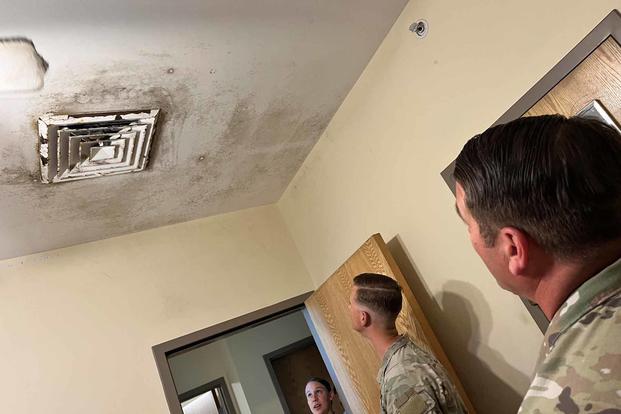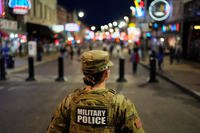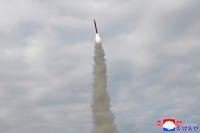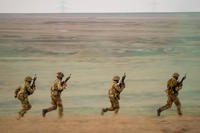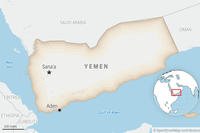The Army found that 2,100 of its facilities had mold issues after a unique service-wide inspection of all of its active-duty barracks and office buildings between November and January, according to data provided by the service.
Service officials inspected nearly 70,000 facilities including barracks, child care facilities and Army-owned housing, the service said. The majority of buildings found to have mold issues were located in humid climates, such as Fort Bragg, North Carolina; Fort Stewart, Georgia; and Schofield Barracks, Hawaii.
The inspections were done after a series of stories from Military.com exposing mold infestations in Army barracks, such as Fort Bragg and Fort Stewart, where beds and bags were covered and destroyed by mold, and photos showed walls and ceilings covered with black fuzz. Exposure to mold can cause a variety of health problems, including respiratory issues.
Read Next: Army Pulls Recruiting Ads After Jonathan Majors' Arrest
"The Army is committed to providing safe, quality housing, barracks and other facilities for our soldiers, families and civilians," Scott Malcom, a spokesperson for the Army's Installation Management Command, told Military.com in a statement. "A critical aspect of this commitment is ensuring all facilities are free of hazardous mold."
Inspections were ordered in a directive from Army Secretary Christine Wormuth in October after the mold problems became public.
Last year at Fort Bragg, roughly 1,100 soldiers had to be relocated to new living quarters due to spiraling mold issues in the damp climate. Twelve barracks at Fort Bragg were set to be demolished this year, five years ahead of schedule, and an additional five are set to be remodeled.
Garrison officials at Bragg scrambled over the summer to accommodate the displaced soldiers after the barracks were effectively condemned. Roughly half were given a housing allowance, a move typically reserved for higher-ranking or married troops.
Military.com was first to detail the scope of moldy and otherwise unlivable living conditions at some of Bragg's barracks. After a senior noncommissioned officer raised the issue behind the scenes with Wormuth, she dispatched officials to inspect the Smoke Bomb Hill barracks. Sergeant Major of the Army Michael Grinston, the service's top enlisted leader, also toured some of the buildings.
Senior Army leadership, including Wormuth and Grinston, have made soldier quality-of-life issues -- such as mold-free housing -- a top priority but have faced an uphill battle with replacing half-century-old barracks.
Mold issues are nothing new to the Army. Aging barracks often have poor ventilation, shoddy construction and inconsistent support from maintenance teams.
For the first time, the new Army inspection data shows the scope of the problem, which until now has been exposed largely by anecdotes reported by the media. That has drawn attention to the issue but provided an incomplete picture of mold problems, which have been the bane of the rank and file for decades.
At the heart of the matter are funding and a lack of notable support on Capitol Hill to boost living standards for soldiers. The Army is seeking a massive cash boost of $288 million in funds to construct new barracks, far above the $49 million in the current year's budget.
Even that funding hike comes nowhere near what the service might need. So far, there has been no significant movement on Capitol Hill to supercharge funding for barracks and other living quarters in the coming budget.
The proposed funding for 2024 would pay for only five new barracks, one each at Fort Wainwright, Alaska; Joint Base Lewis-McChord, Washington; and the Army Natick Soldier Systems Center in Massachusetts; and two at Fort Bragg.
A report last year from the Congressional Budget Office found that to fix up just two installations with the greatest need for new barracks -- Schofield Barracks and Fort Bragg -- would cost $11.2 billion.
-- Steve Beynon can be reached at Steve.Beynon@military.com. Follow him on Twitter @StevenBeynon.
Related: Army Will Check for Mold in All Barracks and Facilities as Service Grapples with Housing Conditions
